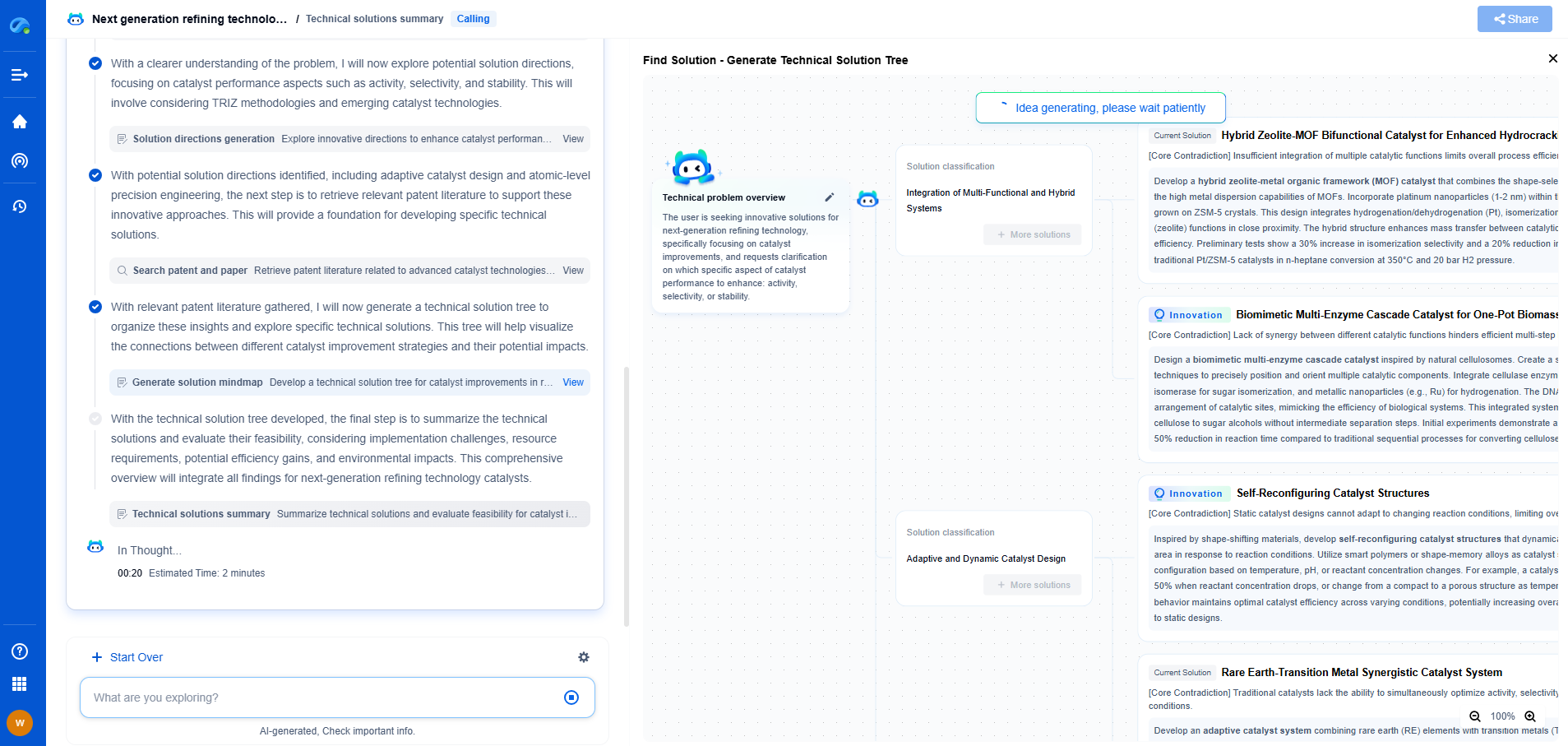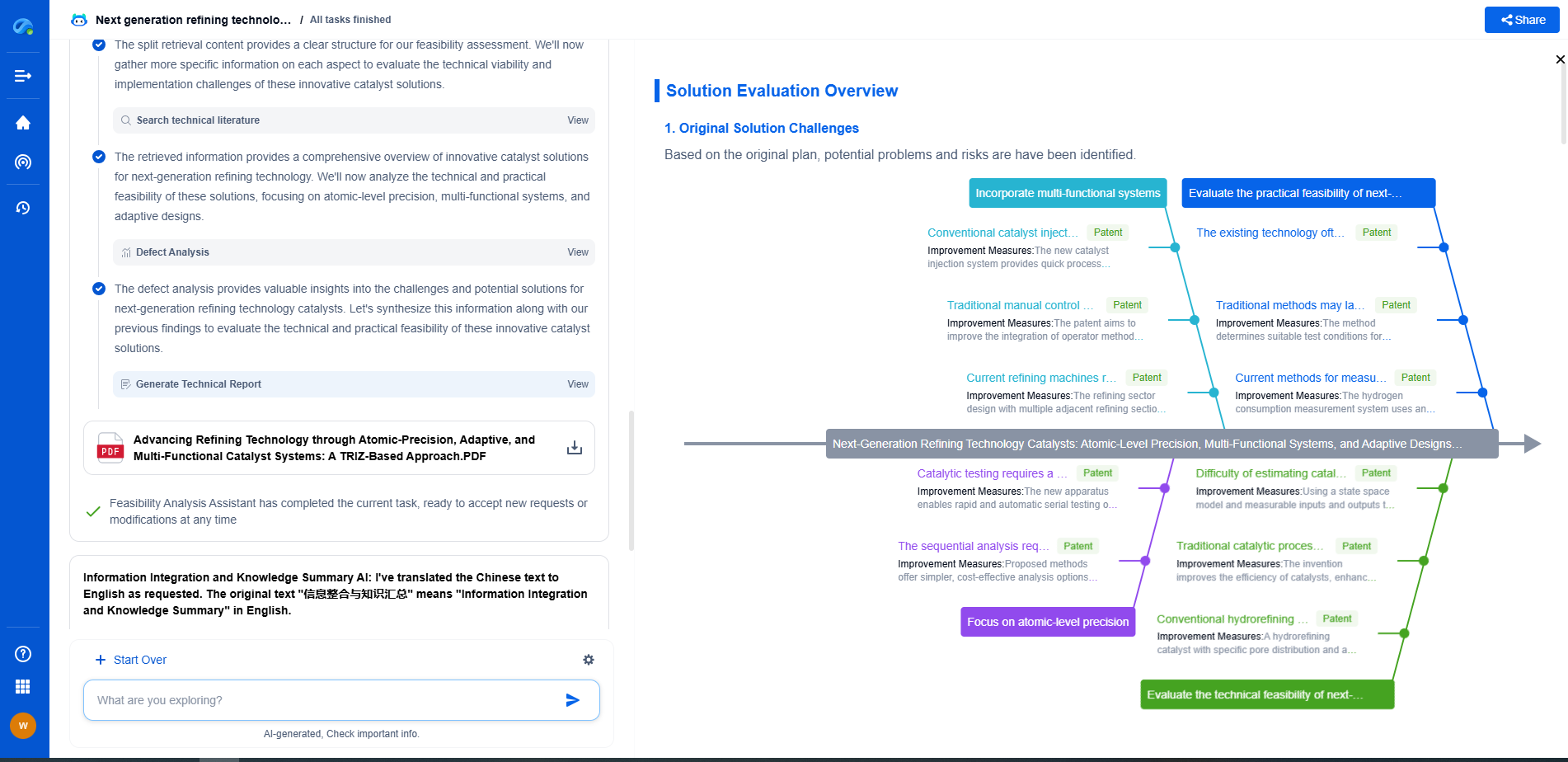What is Backlash in Robot Joints? (Gears, Harmonic Drives, and Prevention)
JUN 26, 2025 |
Backlash is a term widely recognized in the field of robotics, and it pertains to the slight movement or "play" that can occur in mechanical systems, particularly in joints and gears. This phenomenon is critical to understand because it can affect the precision, stability, and efficiency of robotic systems. In the context of robotics, reducing or eliminating backlash is essential for ensuring that machines operate smoothly and accurately. This blog delves into the concept of backlash, exploring how it manifests in robot joints, the role of gears and harmonic drives, and the strategies for preventing it.
Understanding Backlash
Backlash refers to the gap or lost motion between components in a mechanical system. Specifically, it is the amount of clearance or play between mating gears that can result in an unintended motion. This slack can cause inaccuracies in positioning and movement of robotic arms or joints, leading to inefficiencies and reduced control precision. The primary cause of backlash is the necessary tolerance in gear fitting, which allows for smooth motion and thermal expansion without jamming or excessive wear.
The Role of Gears in Backlash
Gears are integral components in many robotic joints, responsible for transmitting torque and motion. However, the engagement of gear teeth is not perfect, and the slight separation between them contributes to backlash. Traditional gear systems, such as spur and helical gears, are particularly prone to this issue. The size and geometry of the gear teeth, the material properties, and the manufacturing precision collectively influence the degree of backlash. In high-precision applications, even minimal backlash can significantly impact performance, necessitating the use of advanced gear designs and materials.
Harmonic Drives: A Solution to Backlash
Harmonic drives are a sophisticated type of gear system designed to minimize or even eliminate backlash. These drives utilize flexible components and unique gear configurations to enhance precision. A harmonic drive consists of three main components: a wave generator, a flexspline, and a circular spline. The wave generator deforms the flexspline, allowing it to engage with the circular spline teeth at multiple points. This multi-point engagement minimizes the gaps between gear teeth, effectively reducing backlash. As a result, harmonic drives are highly valued in robotic systems requiring high precision, such as in surgical robots or precision machining robots.
Preventing Backlash in Robotic Systems
Preventing or reducing backlash is critical for maintaining the precision and accuracy of robotic systems. Here are some strategies to achieve this:
1. Use of Preloaded Systems: Preloading applies a constant force or tension to the gears, ensuring constant contact between the gear teeth and reducing the play between them. This technique is widely used in ball screws and roller bearings.
2. High-Precision Manufacturing: Employing advanced manufacturing techniques with tight tolerances can significantly reduce the initial gap between gear teeth, minimizing backlash from the outset.
3. Material Selection: Choosing materials with minimal thermal expansion properties can reduce the effects of temperature changes, which can exacerbate backlash.
4. Regular Maintenance: Regular inspection and maintenance of gear systems can help detect and correct any wear or misalignment that may contribute to increased backlash over time.
Conclusion
Backlash in robot joints is a critical factor that can influence the performance and accuracy of robotic systems. Understanding its causes and implementing effective solutions, such as harmonic drives and preloading techniques, can significantly enhance the precision and reliability of these systems. As robotics continues to advance, addressing the challenges of backlash will remain a key area of focus to ensure that robotic systems meet the high standards required for modern applications.
Ready to Redefine Your Robotics R&D Workflow?
Whether you're designing next-generation robotic arms, optimizing manipulator kinematics, or mining patent data for innovation insights, Patsnap Eureka, our cutting-edge AI assistant, is built for R&D and IP professionals in high-tech industries, is built to accelerate every step of your journey.
No more getting buried in thousands of documents or wasting time on repetitive technical analysis. Our AI Agent helps R&D and IP teams in high-tech enterprises save hundreds of hours, reduce risk of oversight, and move from concept to prototype faster than ever before.
👉 Experience how AI can revolutionize your robotics innovation cycle. Explore Patsnap Eureka today and see the difference.
- R&D
- Intellectual Property
- Life Sciences
- Materials
- Tech Scout
- Unparalleled Data Quality
- Higher Quality Content
- 60% Fewer Hallucinations
Browse by: Latest US Patents, China's latest patents, Technical Efficacy Thesaurus, Application Domain, Technology Topic, Popular Technical Reports.
© 2025 PatSnap. All rights reserved.Legal|Privacy policy|Modern Slavery Act Transparency Statement|Sitemap|About US| Contact US: help@patsnap.com

